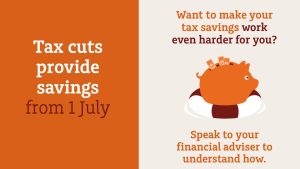Dan Farmer,
Chief Investment Officer MLC Asset Management
Ukraine’s suffering continues, and there are new horrors in the Middle East. Discussing the financial market implications of such events — when lives are being lost — risks trivialising them. Nevertheless, we believe it’s responsible to share our thinking and that’s the spirit behind this note.
The great economic fear over what may happen in the Middle East relates to the potential for a conflict that goes far beyond Israel and Hamas. A wider war involving Iran and its allies, for instance, would likely send the oil price skyrocketing, at least in the short-term, which would make central banks’ fight against inflation even harder, and squeeze households and businesses more.
Question marks over high oil price assumptions
However, it is also possible that oil prices would not remain elevated for an excessively long time as high oil prices sow the seeds of their own downfall because they provoke responses. Firstly, high prices encourage new supply, which eventually helps to weaken prices, and consumers and industry either cut back oil consumption, including by using it more efficiently, or even substitute oil with other forms of transport energy.
A recent Bloomberg headline, China reaches peak gasoline in milestone for electric vehicles[1], gives a flavour of the substitution story. China has been the largest source of global growth for oil over the past two decades but soaring demand for electric vehicles (EVs) means the country’s oil demand is expected to peak this year, two years earlier than anticipated[2]
Recently, EVs accounted for 38% of new passenger vehicles sales in China, up from just 6% in 2020[3]. US passenger EV sales are also on a rapid uptrend and so it is possible that while the oil price might jump to alarming heights for a while, it may then settle back to more hospitable levels.
The 1980–1988 Iran-Iraq War may be a useful reference. That conflict followed a decade of dramatically higher oil prices that contributed mightily to the terrible inflation of the 1970s, but oil prices fell over the 1980s[4] as discipline among Organization of Petroleum Exporting Countries (OPEC) broke down as key players, like Saudi Arabia, increased supply, and non-OPEC production, such as in the North Sea, was developed quickly.
At the same time, car buyers preferenced smaller and more fuel-efficient vehicles, which contributed to bending the oil price curve. All up, even with the protracted Iran-Iraq War, the 1980s is recalled as a decade of strong economic growth, falling inflation and unthreatening oil prices.
When good news is bad news for interest rates
Meanwhile, economic news out of the US is discouraging for hopes that official interest rates might ease any time soon. The US workforce added 336,000 jobs in September[5] much more than expected, as the world’s largest economy remained resilient in the face of higher interest rates.
Despite the US jobs engine’s momentum, blows from higher interest rates are impacting businesses as “bankruptcy filings continued to mount leaving 2023 on track to potentially surpass 2020 as the worst year for corporate bankruptcies in more than a decade.”[6]
Companies with investment-grade credit ratings have been relatively insulated from rising borrowing costs because many locked in low interest rates during the most severe parts of the COVID-19 period. By contrast, companies with lower credit ratings that were forced to rely on loans with floating interest rates are much more vulnerable.
A recent study revealed that nearly half of all publicly-traded companies in America are unprofitable[7], leaving them particularly exposed to higher interest rates. If interest rates remain high, companies will need to devote a larger share of their revenue to cover higher interest expenses as they will find themselves refinancing at higher rates, which does not augur well for the economy or investment markets.
We reach our own conclusions and consider many possible scenarios
Clearly, for financial market bears, there’s no shortage of data to justify pessimism.
However, we conduct our own analysis and come to our own conclusions. Our thinking is informed by intensively analysing the underlying fundamentals of the economy (cyclical indicators), including factors like probability of recession indicators such as employment, growth, inflation and housing, and supplement this with macroeconomic indicators which provide further insights to help understand the economic circumstances across countries, regions, and sectors.
We also look at scenario probabilities, which compels us to think of the many things that can happen, as distinct from landing on one core view and sticking by it, come what may.
You may remember former US Defence Secretary Donald Rumsfeld’s phraseology about “known unknows” and “unknown unknowns”; we believe our scenarios framework actively helps us to unpack both so that we are better prepared for a range of future possibilities.
“We’re not in Kansas anymore”
Fans of the Wizard of Oz will know a line from the movie when Dorothy says to her dog, at one stage, “Toto, I’ve a feeling we’re not in Kansas anymore.”
It conveys that we have stepped outside of what is normal and familiar and now must deal with the unfamiliar and uncomfortable.
“Kansas,” for investors from the 1980s to about two years ago, was a world epitomised by structural falls of inflation and interest rates, and the implementation of market-friendly policies by centre-right as well as centre-left governments across many parts of the world. Strong asset market returns were one result.
The recent past has emphasised how far we have moved from that world. Inflation is stubbornly resistant despite the great pace at which central banks have raised interest rates. Free-market ideas, characterised by globalisation, are becoming lonely, and regulatory and protectionist impulses are gathering strength, in part because of anxieties over wealth inequality.
What worked for four decades is unlikely to be fit for purpose, into the future. The timeless principle of diversification needs to be reimagined, and that is what we are doing.
Making portfolios inflation-resistant is top-of mind, beginning with the management of equities and bonds.
Investing broadly, whether through passive or quasi-passive strategies, proved to be a cost-effective way of accessing strong equity markets returns. However, with prospective share market returns likely to be more challenging, active-management and good stock selection, with the ability to identifying companies with pricing power, will come to the fore.
Rising discount rates depress price to earnings ratios (PEs), especially those associated with long-duration cash flows. This is not a revelation. Consequently, being mindful of companies’ valuations will be especially important to successfully navigating inflation, along with earnings resilience and persistence.
Private markets investing is likely to gain even more attention as a source of potentially strong return generation beyond that available from listed equity markets. Investors and managers can directly influence companies’ business strategy through private equity investments, and by doing so drive operational and financial improvements.
Traditional fixed income asset values have been knocked down by rising interest rates.
The fact they have been hit so hard also means their future return potential is now more attractive than they have been for some time.
There are also opportunities in the much harder to access world of esoteric private credit, which can provide very attractive yields along with diversification benefits.
Investing in such assets can be especially rewarding where the loan-collateral are high quality assets and cash flows uncorrelated to the broader economy, for example, lending for legal receivables and government backed receivables.
In both cases, investors get paid well to take risk regarding when a payment is made, but with relatively lower risk as to whether it will be paid compared with mainstream credit investing (arguably making it a better diversifier). Many of the underlying yields associated with esoteric private credit assets are set at a fixed premium above the cash rate, which means overall income payments rise with interest rates.
Unlisted infrastructure assets providing essential services, such as electricity transmission, are another group of inflation-resilient investments thanks to regulatory regimes mandating inflation linked indexing of income streams. That said, investors need to tread carefully as competition for such assets can be intense, and purchase price discipline coupled with careful asset selection must be paramount.
There’s no time to be lost in configuring portfolios to make them fit for the new era.
[1] China reaches peak gasoline in milestone for electric vehicles. Colin McKerracher, August 29, 2023, https://www.bloomberg.com/news/newsletters/2023-08-29/china-reaches-peak-gasoline-in-milestone-for-electric-vehicles
[2] Ibid
[3] Ibid
[4] Crude oil prices 1947–2004, https://ibs.colorado.edu/barham/courses/econ3070/2008/Chp2/oilprice1947.pdf
[5] The employment situation – September 2023. Bureau of Labor Statistics. US Department of Labor. News
release of October 6, 2023, https://www.bls.gov/news.release/pdf/empsit.pdf
[6] US corporate bankruptcies accelerate in third quarter as 2023 rivals 2020 as worst year in more than
a decade. Joseph Adinolf, October 14, 2023 https://www.marketwatch.com/story/u-s-corporate-bankruptcies-accelerate-in-third-quarter-as-2023-rivals-2020-as-worst-year-in-more-than-a-decade-6bc2af72#:~:text=Bankruptcy%20filings%20are%20mounting%20in%202023.&text=S%26P%20
[7] The corporate debt maturity wall: Implications for capex and employment (Walker/Mori), Goldman Sachs, August 6, 2023, https://www.gspublishing.com/content/research/en/reports/2023/08/07/d2ab6cef-d9ea-453f-b4fa-912d22ab09ee.html
Important information
This communication is provided by MLC Investments Limited (ABN 30 002 641 661, AFSL 230705) (MLCI) and IOOF Investment Service Limited (ABN 80 007 350 405, AFSL 230703) (IISL). Both MLC and IISL are part of the Insignia Financial Group of companies (comprising Insignia Financial Ltd, ABN 49 100 103 722 and its related bodies corporate) (‘Insignia Financial Group’). An investment with MLCI or IISL does not represent a deposit or liability of, and is not guaranteed by, the Insignia Financial Group.
This information may constitute general advice. It has been prepared without taking account of an investor’s objectives, financial situation or needs and because of that an investor should, before acting on the advice, consider the appropriateness of the advice having regard to their personal objectives, financial situation and needs. Past performance is not a reliable indicator of future performance. Share market returns are all in local currency. Any opinions expressed in this communication constitute our judgement at the time of issue and are subject to change. We believe that the information contained in this communication is correct and that any estimates, opinions, conclusions or recommendations are reasonably held or made as at the time of compilation. However, no warranty is made as to their accuracy or reliability (which may change without notice), or other information contained in this communication.
This information is directed to and prepared for Australian residents only.
MLCI or IISL may use the services of any member of the Insignia Financial Group where it makes good business sense to do so and will benefit customers. Amounts paid for these services are always negotiated on an arm’s length basis. MLCI and IISL rely on third parties to provide certain information and is not responsible for its accuracy, nor is MLCI nor IISL liable for any loss arising from a person relying on information provided by third parties. Bloomberg Finance L.P. and its affiliates (collectively, “Bloomberg”) do not approve or endorse any information included in this material and disclaim all liability for any loss or damage of any kind arising out of the use of all or any part of this material.
The funds referred to herein is not sponsored, endorsed, or promoted by MSCI or IISL, and neither MSCI or IISL bear liability with respect to any such funds.







